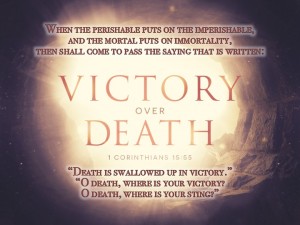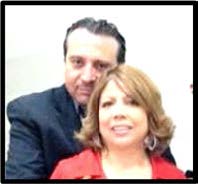 At DayByDay Church Marketing, we believe every local church is uniquely gifted in its ability to share the gospel and multiply disciples who make disciples. There is a distinctive audience who is waiting to hear that message as only your church can tell it.
At DayByDay Church Marketing, we believe every local church is uniquely gifted in its ability to share the gospel and multiply disciples who make disciples. There is a distinctive audience who is waiting to hear that message as only your church can tell it.
In this context, church marketing’s purpose is to help you reach those who will best respond to how your church shares the gospel.
And one of the best ways to do that is through creation of a Total Online Presence as taught by John Jantsch, founder of Duct Tape Marketing®.
While we are always cautious about treating a church or ministry like a business, many of the strategies we implement as Duct Tape Marketing Consultants will serve your church quite effectively.
At its most powerful, marketing is a well-integrated system whose parts function as a seamless whole. As a Certified Duct Tape Marketing Consultancy, DayByDay Church Marketing exists to help you put marketing in the service of your church or ministry.
While each church is unique, there is a model that provides the most reliable way to efficiently lay a foundation from which you can grow your online presence.
Your online church presence is the linchpin of your marketing system. And while each church is unique, there is a model that provides the most reliable way to efficiently lay a foundation from which you can grow your online presence.
Over the next few weeks, we’ll outline how to build the online presence that best enables you to reach the audience most suited to your church or ministry’s unique way of fulfilling the Great Commission.
Our hope is to provide you with the big picture thinking behind the system. This “Strategy First” approach enables you to make better decisions about what online tools and tactics will best serve your church’s mission, vision, values and goals.
Today, we’re going to provide a quick overview of the various components that make up your church or ministry’s Total Online Presence™.
 1 Your Content Platform:
1 Your Content Platform:
We take a strong “Listen First” approach when it comes to producing content. Understanding the conversation the people you want to reach are having about their faith (or lack of faith), about Jesus, and about your church is the first step.
The content you produce helps you get found and begin a conversation with the audience most open to your message and story, and who you are best suited to serve.
Build a sound content platform and all your marketing efforts will be enhanced.
Start by building a “social listening station” using tools like Google Alerts, HootSuite, TweetDeck, Trackur, Social Mention or Sprout Social.
From this point you can gain insight into your audience, other churches, ministries, and important groups, such as key journalists.
You can also begin the important task of understanding what motivates your audience to find you by doing keyword research.
Think of keywords being like chapters in your total body of content plan.
Use tools such as Google Keyword Tool or Wordtracker, to help you show up when people search online for a church or ministry. Create blog posts around these chapters, and create an editorial calendar to fortify your content platform.
Once you start consistently creating content, you can produce valuable short bible studies, FAQs, and eBooks that form a pivotal element in how people come to know, like, and trust you.
 2 Organic SEO:
2 Organic SEO:
Having someone type a search phrase that is key to your business and finding a blog post or page from your site is the ultimate payoff and, long-term, may be the difference between the success or failure of your content initiatives.
Search Engine Optimization can be complex and time consuming, but will pay off in more website visits from people who have entered a key search phrase that lands them on your blog post or web page.
Most organizations can generate significant results by you focusing on just three elements.
Produce keyword rich, educational content – we covered this above, but search engines live on blog posts and other educational content.
Make it easy on the search engines – Make the on-page elements, such as your blog titles, URLs, ALT image attributes, subtitles and internal links, work for you.
If you use WordPress, the Yoast SEO plugin is a must-have! This plugin helps you easily optimize every post and page on your website and blog with very little effort.
It also will produce an XML sitemaps that make it easy for search engines to grab your latest news and information.
Check out Search Engine News for a great primer on writing for SEO.
Draw lots of links naturally from other sites.
Simply writing great content will start this process, but so will writing guest posts (like I’m doing here), uploading content to places like YouTube and SlideShare, making thoughtful comments on other blogs, submitting online press releases and amplifying your content in social networks.
 3 Email Marketing:
3 Email Marketing:
Most churches and many ministries underutilize email marketing, because they associate it with spam.
But there’s a great practice used by reputable businesses that can help you build an email list of people who are eager to hear from you, and contribute to your church or ministry.
It’s called a “double opt-in.” This is a process that asks someone who’s entered their email on your site or landing page to confirm they want to receive emails from you.
Most autoresponders, like Mailchimp, Aweber, and Constant Contact allow this option and also provide clear instructions on every email you send how the recipient may unsubscribe from your list.
An engaged email list, eager to hear from you, is the most valuable marketing asset you can build.
500 responsive email followers trumps 2,500 Twitter followers every day when it comes to actually promoting the things that engage your audience. Focus on building a list of email subscribers that want to hear from you and social media will become a tool set to help you do more of that.

4 Social Media Marketing
This is certainly an area where you should consider strategy before tactics. The first step is to understand how your ideal audience uses social media and how you can use social media to somehow serve them better.
If you do that, you’ll provide immediate value to your audience.
Create Twitter lists of influencers and active social participants you want to reach and add their social profiles monitoring and add them to your church management software. Add a tool like Rapportive to your email.
Then claim and build your profiles on Facebook, LinkedIn, Google+, YouTube, Picasa, SlideShare and Pinterest.
Your plan to work and engage your audience in all of these networks may not be clear yet, but the first step is to claim the free real estate so you can start exploring.
Start by sharing and re-sharing your and other people’s content. Building connections and discover best practices in each individual network, so you can begin to amplify your content and start finding ways to drive audiences to your eBooks, study guides, and newsletter.
 5 Online Advertising:
5 Online Advertising:
Many churches and ministries waste money on advertising and then conclude it doesn’t work.
Pay per click advertising can be very effective when done right. One of our favorite things about it is that a platform like Google AdWords and Facebook allow you to test your thinking a dollar at a time.
Here’s our take on how to make ads pay – Use your ads to drive content awareness instead of simply to sell.
Drive Facebook users to obtain a copy of your eBook or a free study first and then stay in touch.
The basics of PPC are this: Use lots of punchy, vivid copy, but test, revise and test.
Create tightly focused ad groups with highly relevant ad copy, work negative keywords out of your list.
Test some more.
 6 Mobile and Location:
6 Mobile and Location:
Mobile is more of a behavior than a tool. The first step is to analyze what behaviors your audience exhibits before you dive into or dismiss Foursquare or text messaging.
Be assured your customers are reading content, searching and using reviews to make decisions on mobile devices.
Claim your location based profiles in places such as Foursquare and Yelp .
Create mobile and tablet friendly viewing options with tools such as WPTouch, Tekora or GoMobi. Or better make sure your website is responsive, no matter what the device.
Start creating mobile specific content like event promotion pages that take advantage of the growing use of mobile devices as a major part of the decision process.
 7 Analytics and Conversion:
7 Analytics and Conversion:
Like many stage-based processes there is a cyclical aspect as well.
For some, creating benchmarks and key performance indicators is really the first step. So, if you’re one of those folks you can start here, because no matter where you are in the process this stage will always evolve.
Many people can’t start the process of measuring success until they are measuring in real time or can’t start the process of tweaking and testing until all of the elements are in place.
As you build make certain you install tracking code from tools such as Google Analytics, Spring Metrics or KissMetrics so you can begin to build the data to test and refine from.
We suggest starting by setting up an Google Analytics account. Google is great at providing tons of free training to help you understand what you’re looking at.
Then you can start building conversion goals, funnels and events, tracking your ads and split testing your landing pages, opt-in pages and sales pages to discover ways to increase conversion.
When you start to view it as a system, marketing your church becomes much less overwhelming.
In the coming weeks, we’ll break down each of these seven essential stages to help you build a Total Online Presence that will serve your church or ministry and enable you to more effectively share the Greatest Story Ever Told with the audience you are most suited to reach.
About Andy Catsimanes
Andy Catsimanes is the founder of DayByDay Marketing and DayByDay Church Marketing (coming soon!) , dedicated to helping SMBs, churches, and non-profits identify and implement workable marketing systems for predictable growth.
Andy’s a Certified Duct Tape Marketing Consultant, direct response copywriter, and experienced WordPress professional. In his spare time, he volunteers as an ally for Circles® USA. For more articles like this, subscribe to the DayByDay Marketing Blog, or connect via LinkedIn or Twitter.
 On Tuesday, August 16, One Day Conference: The View From Here will be in Denver, Colorado from 8:30-4:30.
On Tuesday, August 16, One Day Conference: The View From Here will be in Denver, Colorado from 8:30-4:30.





 At DayByDay Church Marketing, we believe every local church is uniquely gifted in its ability to share the gospel and multiply disciples who make disciples. There is a distinctive audience who is waiting to hear that message as only your church can tell it.
At DayByDay Church Marketing, we believe every local church is uniquely gifted in its ability to share the gospel and multiply disciples who make disciples. There is a distinctive audience who is waiting to hear that message as only your church can tell it. 1 Your Content Platform:
1 Your Content Platform: 2 Organic SEO:
2 Organic SEO: 3 Email Marketing:
3 Email Marketing:
 5 Online Advertising:
5 Online Advertising: 6 Mobile and Location:
6 Mobile and Location: 7 Analytics and Conversion:
7 Analytics and Conversion:

